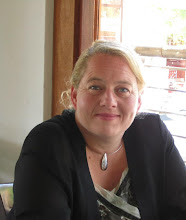In the second part of chapter 1 Mattern goes on to examine the relationship between popular music and community. He starts by writing about the reception of music:
The text of popular music – its structure, sound, and lyrical content – is surely an important dimension to address in considering its politics. The text is rich with social meaning and can be analysed in terms of what it reveals about a social context. But the politics of popular music are not limited to this text. Popular music operates within a social context that also includes the people and sites directly and indirectly involved in its production, consumption, and use. In other words, the political work of a piece of music also occurs in the multiple ways that people use it and in the ways that it circulates in a context. The wider context of reception and use defines a communicative arena in which meanings are created, shared, negotiated, and changed and in which various individuals and groups appropriate music for different ends. [Pg 15-16]
Music extends to social practices which become imbedded in people’s lives [pg 16]. These can then become linked to social movements which inturn develop human identity and support the formation of a community [pg 16]. Identity is formed through our interaction with our social environment [pg 16]. Music captures past experiences and allows us to live through them by forming a common memory [pg 17].
Mattern states that it is both the lyrics and the sound that communicate meaning:
This idea is most evident in musical lyrics which readily express memories, histories, emotions, political ideologies and ideas. Music however, communicates through sound as well... Moreover, music provides a communicative medium that is not simply an alternative way to say the same things that humans say through speech. Music, like other art forms, can express meanings that are not accessible through words or express them in ways that give listeners more immediate access to emotions and ideas [pg 17].
The directly physical experience of music leads to the sharing of deeper meanings [pg 17]. It is therefore a potent form of communication that acts as an historical record [pg 18]. When an artist composes music they draw from the social environment around them and therefore music forms not just the memory of the individual but a memory of the community as music reflects a communal experience [pg 18]. It becomes part of the group identity not just that of the individual and reinforces the meaning of group life [pg 19]. Music also helps to distinguish between groups and individuals because it can be non inclusive – not everyone fits into the group or identifies with the music [pg 19]. Interpretation can lead to disagreements about meaning and this highlights the limits of music’s ability to communicate [pg 20]. Music can create differences and separate one community from another as well as bring forward differences within a community [pg 21].
Commercial rock and pop music have a homogenising effect however a diversity of music co-exists with these forms [pg 22]. Experiences of a range of music may make us more tolerant of others and may educate those not within the group about the issues that are raised in song [pg 22].
Mattern writes, ultimately:
Whether the links between music and community result in democratic outcomes depends on specific social circumstances... The work that music accomplishes within and between communities depends on strategic use of political action and power – on the variable capacity of different individuals and groups to control musical production, meaning, and use.
Further Reading
Mark Mattern, Acting in Concert: Music, Community and Political Action (1998) < http://www.amazon.com/Acting-Concert-Community-Political-Action/dp/0813524849/ref=sr_1_1?ie=UTF8&s=books&qid=1298511593&sr=8-1 > at 24 February 2011
Subscribe to:
Post Comments (Atom)


No comments:
Post a Comment